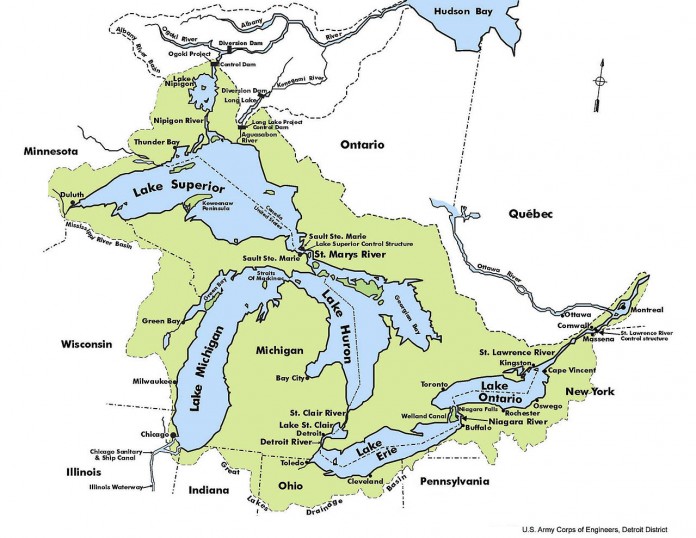CHICAGO — Toxic releases into surface waters in the Great Lakes Basin increased by 12 percent from 2010 to 2011, according to the U.S. Environmental Protection Agency’s annual Toxics Release Inventory report published recently.
Nationwide, toxic surface water discharges decreased by 3 percent.
“This is a significant increase in toxic releases to our waters — and an indication that the Great Lakes region is lagging behind other parts of the country,” said Susan Hedman, EPA Region 5 Administrator and Great Lakes national program manager.
Pollutants
Nitrates and pesticides from municipal wastewater treatment plants and agriculture account for most of the toxic surface water discharges to the Great Lakes Basin. Nitrates were also discharged by primary metals facilities, such as iron and steel mills and smelters, and food and beverage manufacturers.
The Great Lakes Basin consists of Lakes Superior, Michigan, Huron, Erie and Ontario; a number of other smaller lakes and waterways; and the surrounding watershed. The watershed covers parts of Illinois, Indiana, Minnesota, Michigan, New York, Ohio, Pennsylvania and Wisconsin, and parts of Ontario in Canada.
The Great Lakes are the largest surface freshwater system in the world. Despite increases from 2010 to 2011, overall toxic releases in the Great Lakes Basin have decreased about 40 percent since 2003 and are currently at the second-lowest level in a decade.
Surface water, air and land releases in the basin increased by 12, 1 and 4 percent respectively, while underground injection decreased 5 percent from 2010 to 2011.
Nationwide, the 2011 TRI data show total toxic air releases in 2011 declined 8 percent from 2010, mostly because of decreased emissions of hazardous air pollutants. Total releases of toxic chemicals increased for the second year in a row as a result of mining.
What it does
EPA’s TRI program collects information on toxic chemical releases to the air, water and land, as well as information on waste management and pollution prevention activities by facilities across the country.
Facilities must report their toxic releases to EPA under the Federal Emergency Planning and Community Right-to-Know Act by the beginning of July each year. The Pollution Prevention Act of 1990 also requires information on waste management activities related to TRI chemicals.
Also, EPA’s TRI mobile application, myRTK, geographically displays nearby facilities that report to the TRI program, as well as facilities with EPA air, water or hazardous waste program permits.










